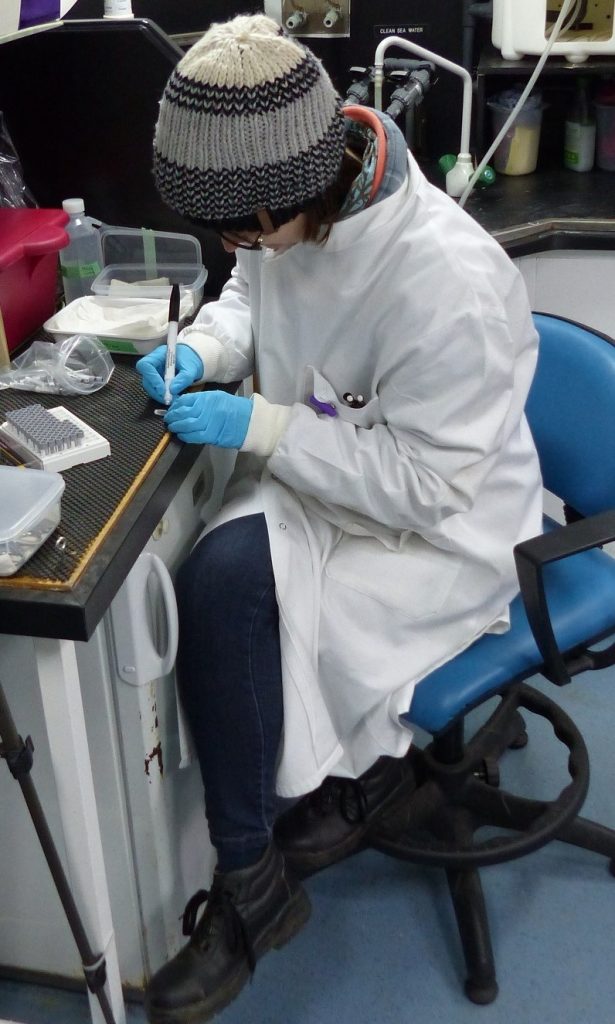In the vast South Atlantic Ocean, the most remote inhabited island on the planet suddenly rises up out of the sea. Not having seen land since I boarded the RRS Discovery and she departed Stanley in the Falklands 8 days before, it was an exciting sight. The island’s volcanic nature is evident not only by its sharp peak but also by the black rock flow visible near the settlement, a reminder of a previous eruption.

Upon arrival we headed towards the first of the two seamounts, RSA and McNish, which were the focus of this part of the DY100 survey. These are located in the south-west of the Archipelago’s exclusive economic zone and subject to demersal fishing. As part of the Blue Belt Project, the survey led by the Centre for Environment, Fisheries and Aquaculture Science (CEFAS) aims to fill some of the knowledge gaps with regards to the marine environments around Tristan Da Cunha (a UK Overseas Territory), in order to help inform the development and implementation of their marine protection strategies.
The seamounts may potentially support a diverse and productive ecosystem due to the nutrient cycling induced by upwelling around these formations. However, as yet the species composition and distribution of organisms in these areas is poorly understood. Therefore, with the hope of revealing some of the hidden secrets of these mysterious areas below the surface of the ocean, we set out to investigate using acoustics and pelagic trawls. The pelagic team was rather excited to use the RMT25 net. Being 25 meters long it is much larger than the RMT8 used in the previous survey the year before, therefore we held high expectations of catching come amazing animals.
The pelagic nets were fished at night therefore we became almost nocturnal for the duration of the study. That along with adjusting to the motion of the ship and working in the chilly 8⁰C room made for a challenging first few days; however it did not detract from the excitement of catching some weird and truly wonderful organisms. Fishing to 1000m deep we caught all sorts of animals; from viperfish and Spookfish to crustaceans, squid and jellyfish! Even though we did have some issues with the net, the diversity of the catch did not disappoint.

My role on board the ship as the Biobanking Technician for CryoArks was to collect tissue samples from the range of organisms brought up in the trawls. Many of the organisms were very small and numerous and I was able to collect whole animals in my cryovials for the biobank. Some of the fish were much larger and from them I took muscle tissue. In total, I collected 930 samples from the organisms brought up from the waters in and around the seamounts. All are now stored in the -80⁰C freezer on board, the first half of a collection that I will be proud to bring back and add to the CryoArks biobank.

At the end of the very busy 9 days of trawling we were able to spend some time on Tristan Da Cunha! To stand on the beautiful island with its rich green and black colours and friendly people, it was a great privilege and a lovely, calming reprieve from the business of the ship. We are now back on board and on our way to our next destination. I am very much looking forward to seeing what we’ll find in the waters of St Helena!


